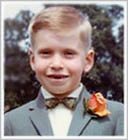An Illustrated History of Old Sutton in St Helens, Lancashire
Part 13 (of 95 parts) - History of Education in Sutton & Bold
c) Sutton 'Nash' in the 20th Century | d) Marshalls Cross School
e) Clock Face / St Aidans School | f) Sutton Library | Photo Album
Also see: Robins Lane / Sutton High (5 Parts) St. Anne's School
Researched and Written by Stephen Wainwright ©MMXX Contact Me
Old Sutton in St Helens
Sutton ‘Nash’ 20th Century
Marshalls Cross School
Clock Face / St. Aidan’s
Sutton Libraries
Introduction to the History of Education in Sutton
Historically the provision of education for the less well-off has been linked to the Church. So Sutton's lack of churches and parish of its own until the 1840s, was a considerable handicap to the development of regular schooling for the children of working-class families. Private education at differing levels was available for the youngsters of better-off families and 1833 statistics reveal that Sutton, with a then population of 3,173, had six day schools that accommodated 237 pupils. They were mainly 'dame' schools, and probably offered little more than a foundation in the basics.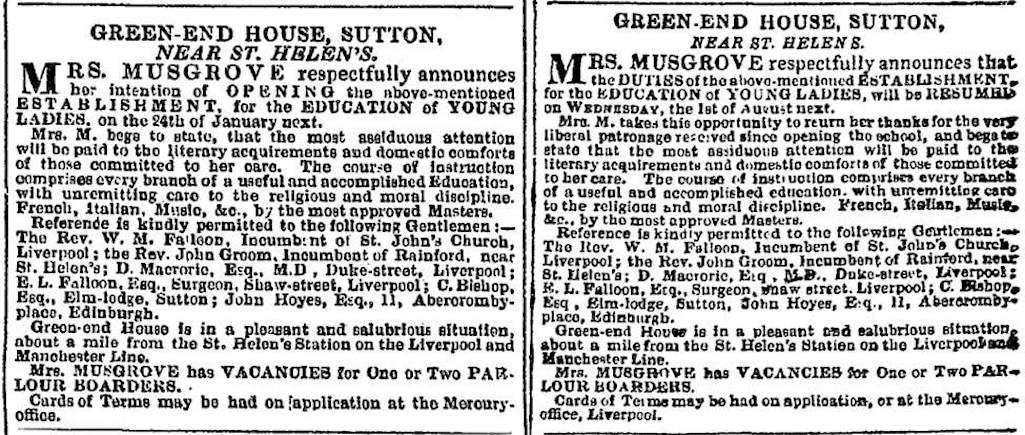
Advertisements placed in the Liverpool Mercury on December 19th 1848 and July 20th 1849 for Green End House School

Advertisements placed in the Liverpool Mercury in 1848 and 1849

Liverpool Mercury ads from1848/9
The British Plate Glass Co's works nearby also had their own school and the Liverpool Mercury of August 31st 1857 reported how 'between 200 and 300 boys and girls' from the Ravenhead school had travelled to New Brighton for a day out adding that 'the appearance of the children was exceedingly neat and orderly, reflecting great credit on both parents and teachers.' The school had 500 pupils when it closed in 1892 under the ownership of the London and Manchester Plate Glass Company.
By the end of the nineteenth century, Sutton was reported to have had two private schools. When 94-year-old Catherine Williams wrote her Sutton memoirs in 1983, she refers to a Miss Wainwright having had a dame school in Ellamsbridge Road. Around a dozen pupils of various ages were taught in her front parlour for fourpence a week. Catherine also described how teaching nuns at the Sutton convent nearby, took in pupils for sixpence a week, with piano lessons available for an extra tanner.
By this time free education was available to all and much of the credit has to go to Reverend Henry Edward Francis Vallancey (1807 - 1888) and Father Bernadine Carosi. Funding was problematic for both Church of England and Roman Catholic Passionist parishes as they managed the educational needs of a rapidly expanding Sutton populace. Vallancey was able to call on a number of wealthy parishioners and, coming from a well-off family, initially subsidised his schools from his own pocket. However the Passionist Fathers had a much smaller pool of benefactors and had to cope with a massive rise in parishioners in just half a century.
It's been said that there was only 30-40 Roman Catholics in total in Sutton and Bold during the 1840s. However, by the mid-nineties, there were around 1000 Catholic children who needed educating. The resources required were a huge challenge for both Christian religions and this page will detail how this was accomplished.
Henry Vallancey and Sutton National Schools
Rev. Vallancey was the first vicar of Sutton Church who took up his benefice in 1849. As soon as he arrived in Sutton township, Vallancey set about improving the education of local Sutton children. Although Sunday or Sabbath Schools had begun in 1806, he was shocked to find little other provision for the poor and in a letter dated 13th December 1849 to Brasenose College in Oxford, who were the owners of a small Sutton estate, he wrote: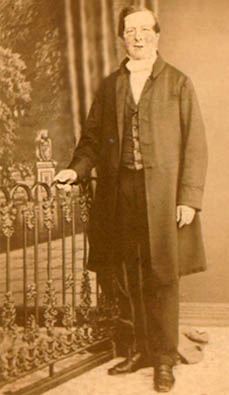
The accounts for the schools' first year of operation show that they were educating 95 boys and 74 girls with a budget of £120. This was spent on equipment and fuel, plus pay for the two teachers. These were a young married couple, Thomas and Sarah Carter, who had been appointed in December 1849 and lived in a New Street schoolhouse. Thomas was aged about 25 when he came to Sutton from Newby Bridge and he had been a pupil at Chester Diocesan Training College.
Annual fêtes in Sherdley Park began immediately and a Liverpool Mercury article of August 13th 1852 reported that at that year's gathering, Rev. Vallancey had presented to the two teachers a 'handsome Bible' in recognition of their services, as they were both leaving to take up positions at a Lake District school. During the couple's stewardship, the school population had risen to 336, double its first year total.
On May 19th 1855, the Manchester Courier and Lancashire General Advertiser described how a two-day fundraising bazaar had been held earlier in the week at St. Helens Town Hall. The event was in aid of the Sutton National Schools with 'a choice collection of useful and fancy articles' on sale. A Liverpool Mercury report of August 28th 1855 described the schools' annual 'day of festivity' with the Moorflat School Fife Band leading the children as they processed to the houses of Rev. Vallancey and William Pilkington, followed by Sherdley Hall. At each the youngsters were 'liberally regaled with suitable refreshments'. In another letter written in June 1856, Henry Vallancey said his schools were now firmly established. However, he felt that they were situated too far away from the St.Helens Junction / Sutton Oak district where most of his congregation lived and worked:

Advertisement for Sutton ''Nash' girls' school placed in the Liverpool Mercury dated January 15th 1895

Advertisement in the Liverpool Mercury dated January 15th 1895

1895 Liverpool Mercury advert
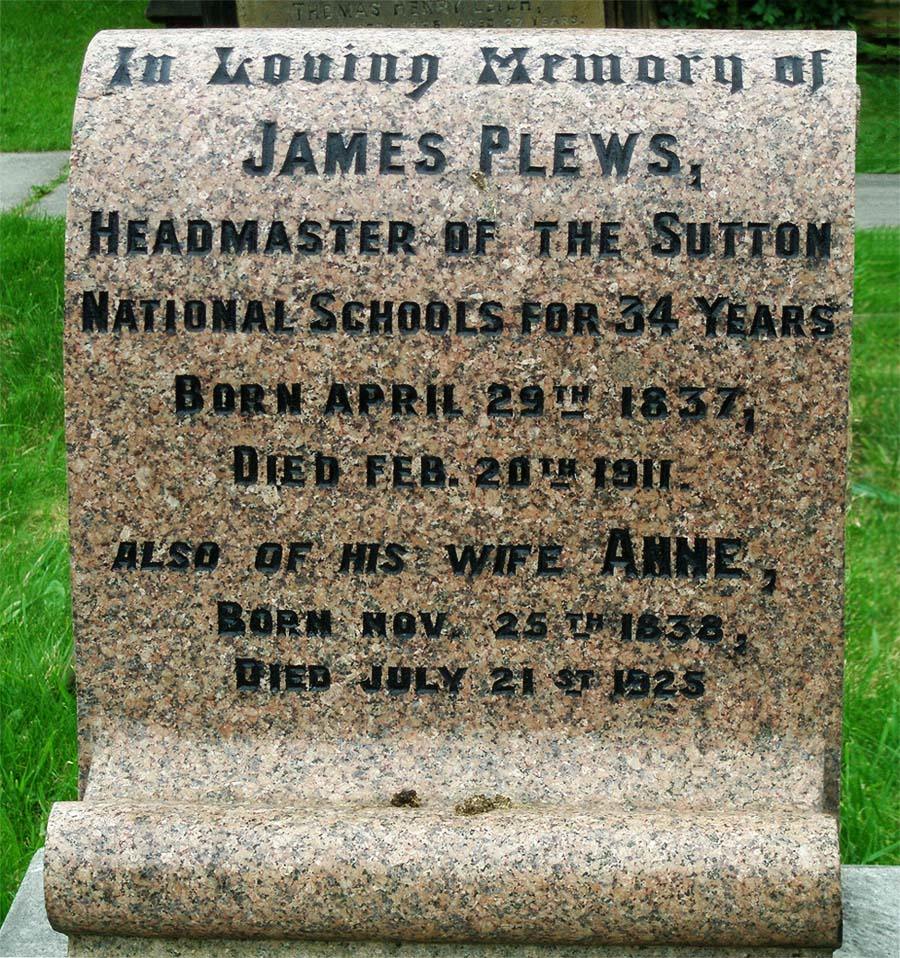
Memorial to longstanding ’Sutton Nash' headmaster James Plews in the Sutton Parish Churchyard

Memorial to headmaster James Plews in the Sutton Parish Churchyard

James Plews memorial at St.Nicholas
As the population of Sutton expanded during the latter half of the 19th century, so the numbers of children at Sutton National massively increased. On June 17th 1887, the Liverpool Daily Post published an article that described the celebrations planned in St.Helens to commemorate Queen Victoria's golden jubilee. These involved a huge procession on the following Tuesday of the 12,443 pupils then enrolled at the more than 20 schools in St.Helens. Of these 784 were studying at Sutton National, an almost 5 fold increase on the pupil numbers when the school first opened.
Speaking in 1968 Enoch Coaley provided an insight into what Sutton National School was like at the end of the 19th century. Born in 1888 and living in Hill's Moss Road, Enoch recalled as a seven-year-old how he would leave school in the evening to be met at the gate by voluntary workers offering balm-cakes and corned beef:
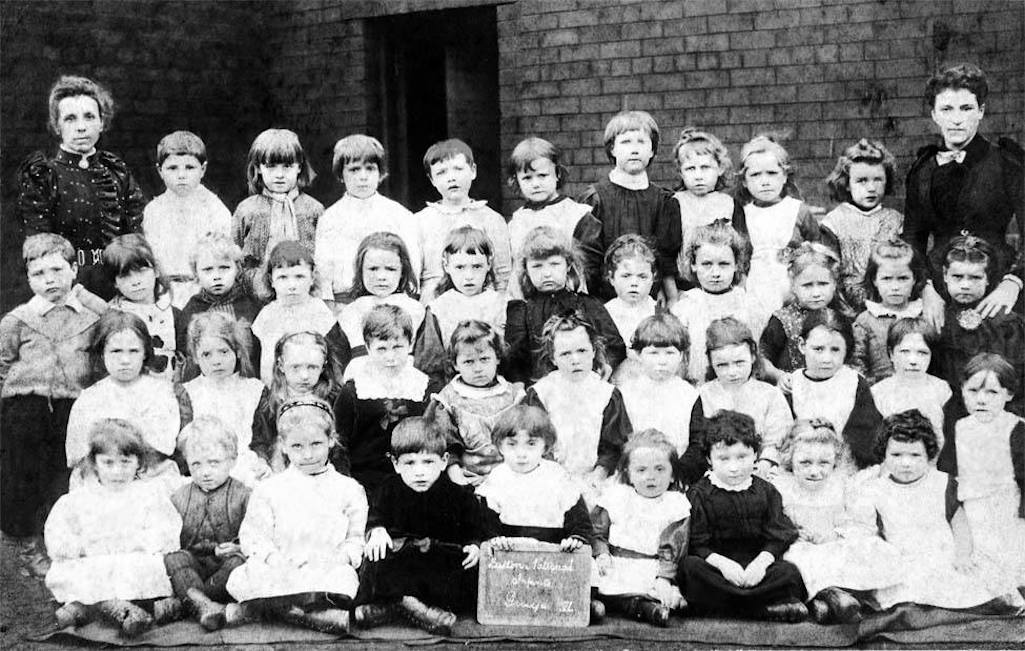
Class photo of Sutton National School Infants Group VI taken c.1895 - contributed by Frank Parry

Class photo of Sutton National School Infants Group VI taken c.1895

Sutton National Infants Group VI c.1895
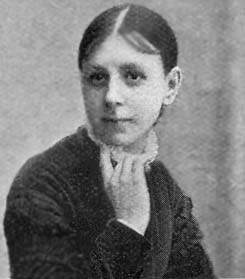
The St.Helens Newspaper's obituary of James Plews, published on February 24th 1911, said he had been 'associated with every project that had for its object, the improvement of the conditions of life of the people of Sutton'. James Plews died in 1911 and he has a prominent memorial at the front of the New Street church.
Although James had a remarkable longevity as head of the Sutton 'Nash', he was outshone by Hannah Parr (1858 - 1935). According to her headstone in Sutton Parish Churchyard, Hannah served as headmistress of the infants' school for 41 years. However this period probably included her time as an assistant mistress at Sutton National. In 1881 as Hannah Rosbotham, she had won the Albert medal for bravery after a terrible storm hit the school dislodging the belfry and killing a child. (See article 'The Sutton National School Storm')
That wasn’t the only occasion when there was an incident at Sutton National. In 1872 it had been struck by lightning but fortunately the children had been dismissed just minutes earlier. The explosion at the Kurtz chemical works on May 12th 1899 that killed eight men also impacted on the school. The blast blew some children across the room and windows were blown in. For a day or two while the windows were being replaced, the pupils had to have their lessons in the casting room of Sutton Glass Works.
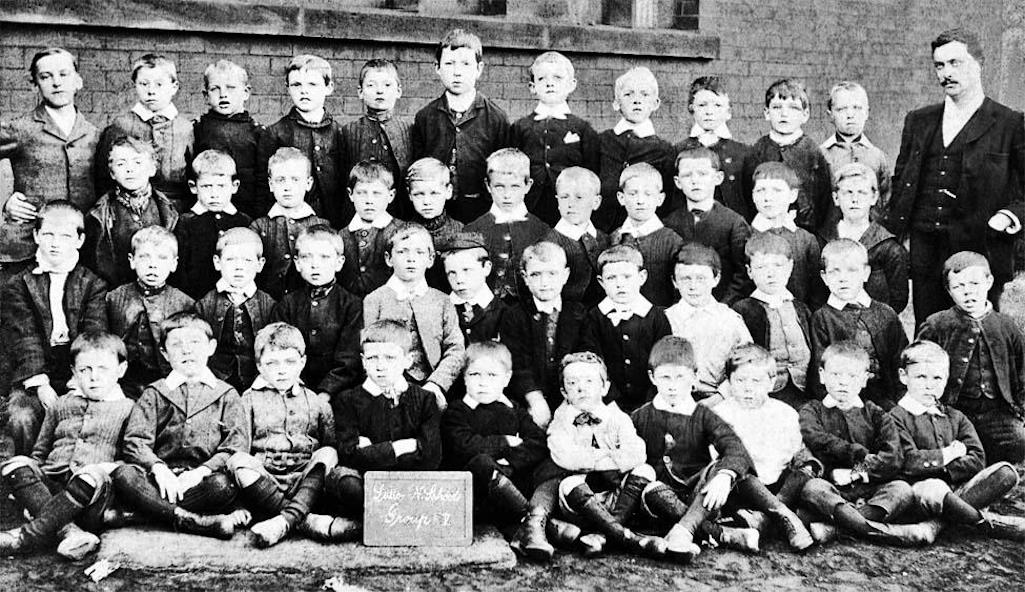
Class photo of Sutton National School Group V taken about 1895/6 - contributed by Frank Parry

Class photo of Sutton National School Group V taken about 1895/6

Sutton National Group V c.1895
Sutton National School During the 20th Century
In 1914, four-year-old Frank Bamber began attending Sutton 'Nash' infants school. In his memoirs, 'Clog Clatters of Old Sutton', he explained how each class had about fifty pupils who had to share ten to twelve wooden desks between them. Frank also discussed the school's design: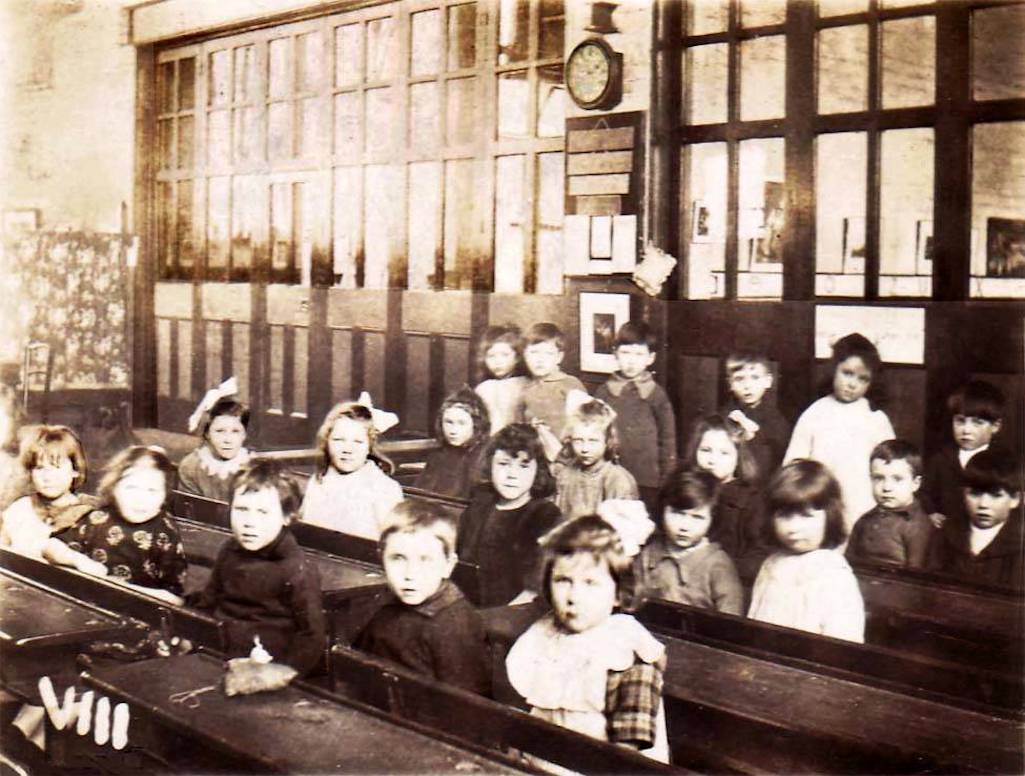
Sutton National schoolchildren in the infants school in 1924 - contributed by Brenda Macdonald / Joan Heyes

Class of Sutton National schoolchildren in the infants school in 1924

Sutton National infants class in 1924
Marion Roughley describes how her father John Hughes, who was born in 1919 at 95 Waterdale Crescent, was one who qualified for free breakfast of treacle 'butties':
In his memoirs Frank Bamber describes Sutton National as a red brick building that was 'L' shaped, with the girls on the bottom floor and the boys on the top floor. The boys would enter the school via Ellamsbridge Road, then walk across the playground through large opening inward doors that led into a very large entrance hall. This had a wide stone stairway about fourteen feet across, that had eighteen or so steps that led onto a landing. This in turn had two stone stairways, one to the right and another to the left, which was in a reverse direction to the main stairway. These led into another entrance hall and then divided off into various classrooms that had very high ceilings.
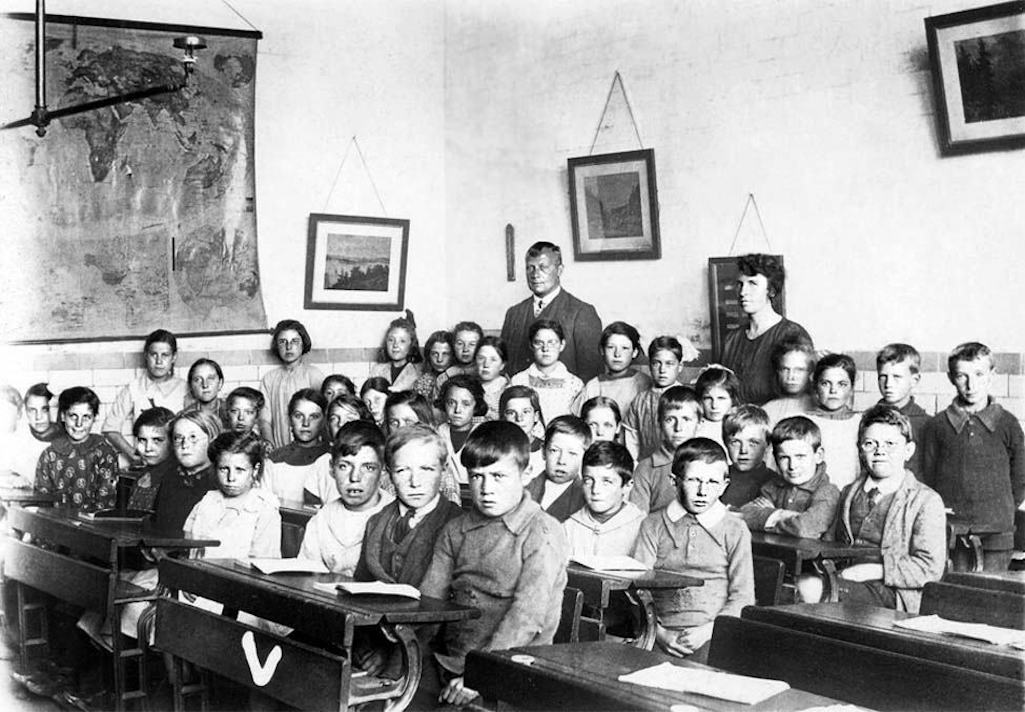
Sutton National class photo with teacher Elizabeth Webster - undated but around 1930 - contributed by Alan Tucker

Sutton National class photo with teacher Elizabeth Webster taken around 1930

Sutton National class photo c.1930
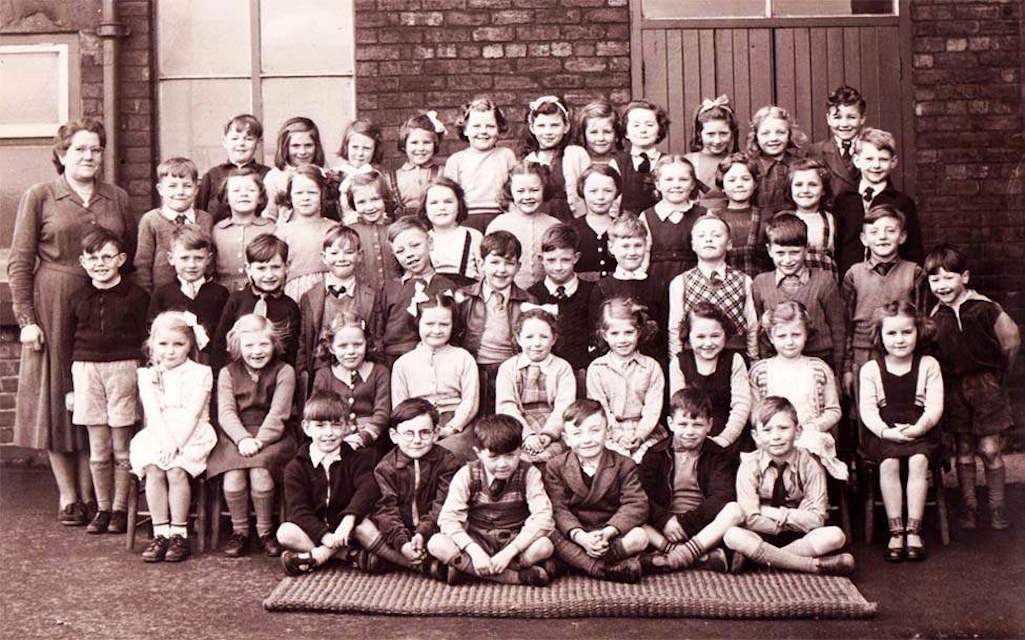
Taken c.1953/4 - contributed by Marion Roughley (née Hughes) pictured 1st left on 2nd row from front - Teacher Mrs Rodgers

Class photo of Sutton National children 1953/4 with teacher Mrs. Rodgers

Taken c.1953 with teacher Mrs. Rodgers
The war memorial was unveiled at Sutton National School on December 30th 1920 by the former Mayor of St Helens, Dr Henry Bates. It consisted of two large laminated rolls framed in oak and contained the names of over 700 old scholars who had served in the war. In addition there was a corresponding large frame containing 78 photos of the 92 old scholars that had died. Pictures of fourteen former students that had fallen in the war could still not be obtained. Twenty-six former pupils were honoured for their actions during the devastating conflict.
At the start of the new school year in August 1931, 129 older boys and 146 girls were transferred to Robins Lane School. This was in response to the Hadow reports, written by influential educational reformer William Hadow, who had called for the ending of all-age schools, the re-organisation of elementary education and the creation of secondary modern schools. The transfer left the Church of England school in Ellamsbridge Road with 436 pupils.
As well as a place of education, Sutton National was also used as a form of community centre where various gatherings took place, including political and church meetings. The Sutton Conservative Club held an annual tea party there and it was also used as a polling station during elections. In February 1938 the St.Helens Newspaper reported on a 'splendid' boxing tournament that had been held in the school that was promoted by former pupil and boxer / coach George 'Bold' Thomas.
Also in 1938 there was considerable concern about the state of the two Sutton church schools, i.e. Sutton National and Marshalls Cross school, which were attended by nearly 1000 pupils. The Church Times of March 25th 1938 blamed the disrepair on a long-standing dispute between the All Saints Parochial Church Council and vicar Rev. Colegrove. This, they claimed, had led to a lack of fundraising and the children were suffering, having at times to be warmed in batches in front of a fire.
So the Archdeacon of Warrington, the Ven. J. Percy Baker, held an emergency meeting and roused the warring parties by a ‘trumpet call to Christian duty’, in order to address the situation. The Rev. Canon J. Lovett, of Prescot Parish Church, then formed a restoration committee (chaired by Fred Lester) to save the schools from ‘financial disaster’, as Rev. Colegrove later wrote in a Sutton Parish magazine. By January 1939 almost £500 had been raised (which became £1000 by June) through gifts, social occasions and a garden party in Sherdley Park, along with weekly house-to-house collections.
The reconditioning of the two schools could now begin and was undertaken by G. H. Bellis & Sons and initially involved installing new lavatories and the replacement of gutters and downspouts. The re-pointing and repainting of the schools’ exteriors was also planned, as well as other much-needed work, once a further £3,000 had been raised. The Archdeacon of Warrington, writing in the Liverpool Diocesan Leaflet for June, said he was “immensely cheered by what has happened in Sutton”. The headmaster of the Sutton National boys’ school at this time was a Mr. Anders.
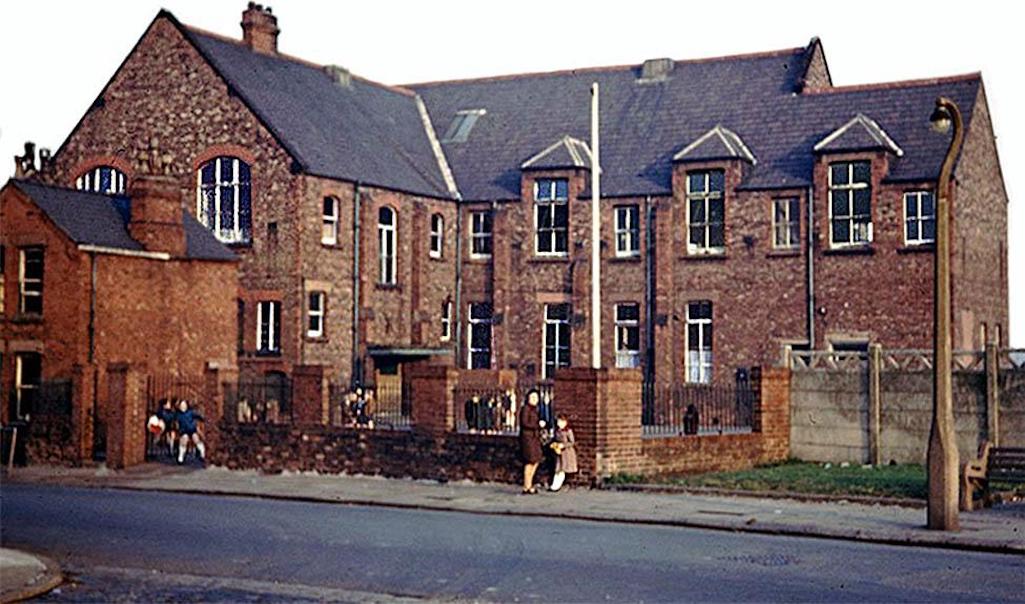
The Sutton National School in Ellamsbridge Road - contributed by Margaret Ward (née Foy)

The Sutton National School in Ellamsbridge Road, Sutton, St.Helens

The Sutton National School
The former Vicar of Sutton, the Rev. ‘Reg’ Smith, returned to his old parish on June 13th 1968 to open a new classroom at Sutton National infants’ school. Local people were involved in fundraising for the new room, which accommodated 40 pupils and cost £8,000 to build.
The Old Students and Friends of Sutton National Schools’ Association held a garden party at Maypole Farm in Gorsey Lane on August 10th 1968. Over 100 visitors enjoyed the various stalls, pony rides and afternoon tea, with the proceeds going to the building of the new junior school. The new chairman of the association was going to be Len Guest from Hoghton Road, succeeding Rev. Edgell, who would soon be leaving the parish. On June 28th 1969 a garden party organised by the Association raised over £60 for the new school building fund. The event was opened by the former Sutton vicar, the Rev. Reg Smith, who was now the Rector of Bury.
As to post-war staff members, George Myers was a long-standing headteacher. Like some of his predecessors, Mr. Myers acted as a curate at All Saints Church and was said to have been quite forthright in his preaching. Well-remembered teachers are Mrs. Twist, Mrs. Darlington, Mrs. Rogers and Mrs. Carroll who taught at the school from the early 1960s until retiring in the late '80s. She was Marie Hibbert when she began teaching and is described by her niece Lynn Edwards:

Marshalls Cross School
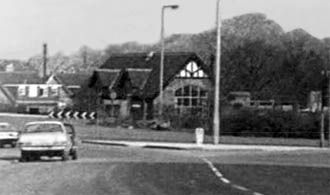
The land for the new school was donated by Captain Michael Hughes and on February 13th 1900, Hughes’s wife Edith organised a fundraising concert in Sutton ‘Nash’. This included performances by some of her friends and it raised nearly £50 for the new school. Performers including Sutton Road Prize Band, Lady Basing, comedian Harry Collins and Sir Delves and Lady Broughton performed duets. The couple’s son Jock would later stand trial for murder in Kenya and became the subject of the famous film ‘White Mischief’. There was also a cinematograph exhibition and showing of lantern slides of the Boer War, as it became known.
However most of the funds for Marshalls Cross School came from a bazaar held in St.Helens Town Hall at the end of April 1902, which was supported by a number of the town’s influential citizens. During the bazaar’s opening ceremony, Rev. Crane said it had been the product of ten months preparation in Sutton, with the whole parish being “one hive of industry”, creating “wonderful works of art”. The assembly hall featured many stalls and was decorated so it resembled a street in the fictional town of Pynka Pong in ‘San Toy’, the hugely popular ‘Chinese’ musical comedy that had recently been performed in London.
The bazaar raised around £1,000, which as well as funding the building of the school, also went towards some restoration work at St. Nicholas church. The new school opened on December 27th 1902 as a Church of England infants’ day and Sunday school, accommodating about 120 pupils and costing about £900.
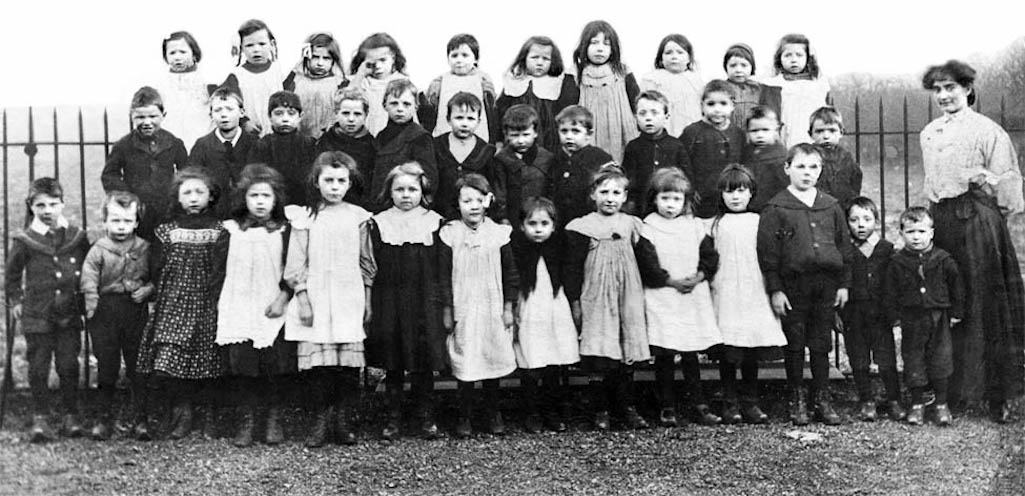

However the report did criticise the state of the accommodation, calling for the building’s interior to be decorated and the cloakroom roof to be made watertight. The unsurfaced nature of the playground was also criticised, however it was suggested that a section could be turned into a garden and the children ‘encouraged in the observation of living things’.
Little action appears to have been taken and the next report from 1938 was very critical, describing the school premises as being in a state of disrepair. Sections of iron railings and downspouts were broken, the cloakroom roof had partly collapsed and at times of bad weather, rain had entered through the main roof. After seemingly ignoring the previous report, HM Inspectors now wanted action by the school managers (what these days are called governors), led by the Sutton Parish vicar Rev. Colegrove.
As stated in the article above on Sutton National, the dilapidated condition was blamed on a long-standing dispute between the cleric and his All Saints Parochial Church Council. The poor school report prompted the formation of a restoration committee, which raised thousands of pounds to improve both Marshalls Cross and the Sutton National schools.
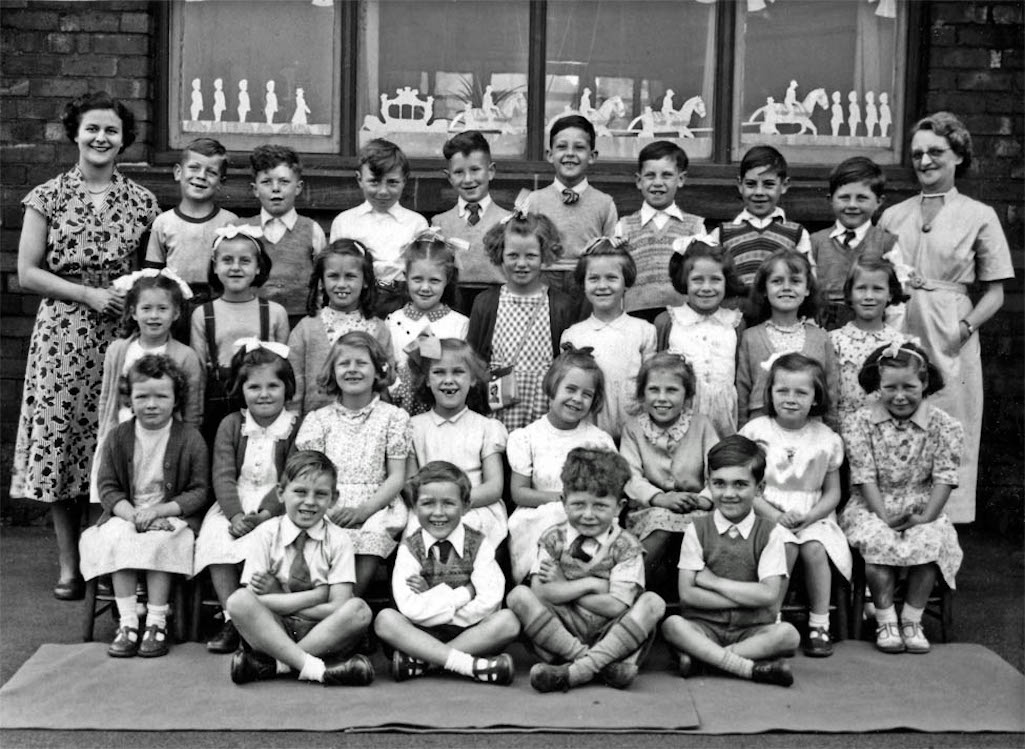
Class photo c.1953 with teachers thought to be Miss Bithell (left) and Mrs Finch (right) - contributed by Dr. Wilf Powell

Class photo c.1953 with teachers thought to be Miss Bithell and Mrs. Finch

With Miss Bithell and Mrs Finch c.1953
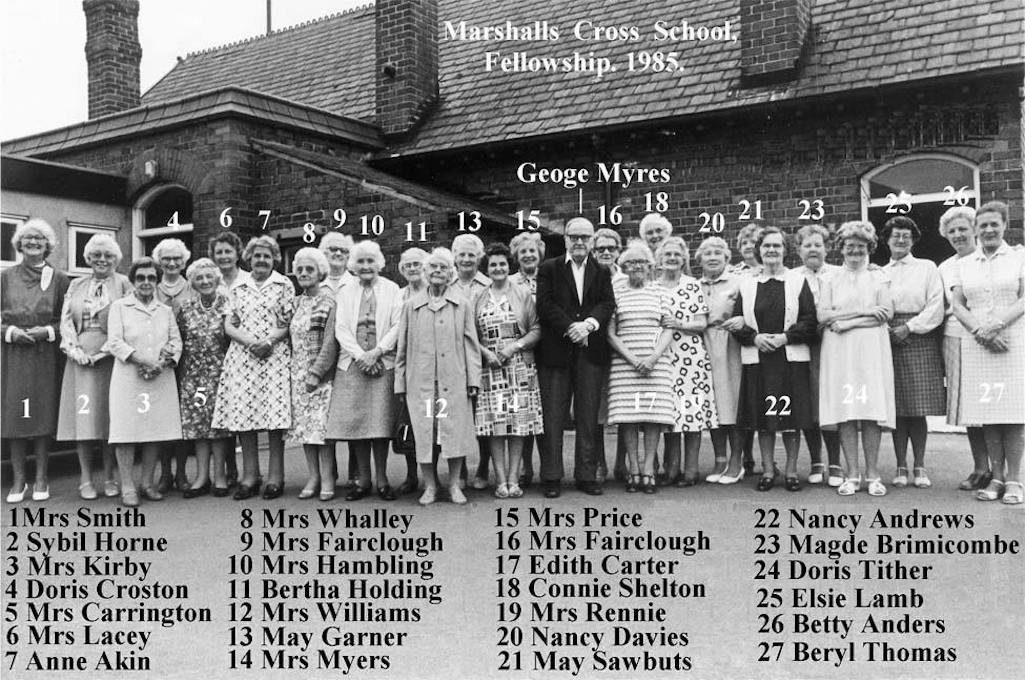
Members of St.Nicholas Fellowship outside Marshalls Cross School in 1985 - contributed by Jim Lamb

Members of St.Nicholas Fellowship outside the school in 1985

St.Nicholas Fellowship members outside Marshalls Cross School in 1985
The small infants school closed in the early 1990s and part of its building is now used by the Sherdley Manor Nursing Home. If you can provide more information or photographs of Marshalls Cross School, please get in touch. (Thanks to Jim Lamb, Marjorie Hall, Liz Mercer and Andy Hatton for their contributions)
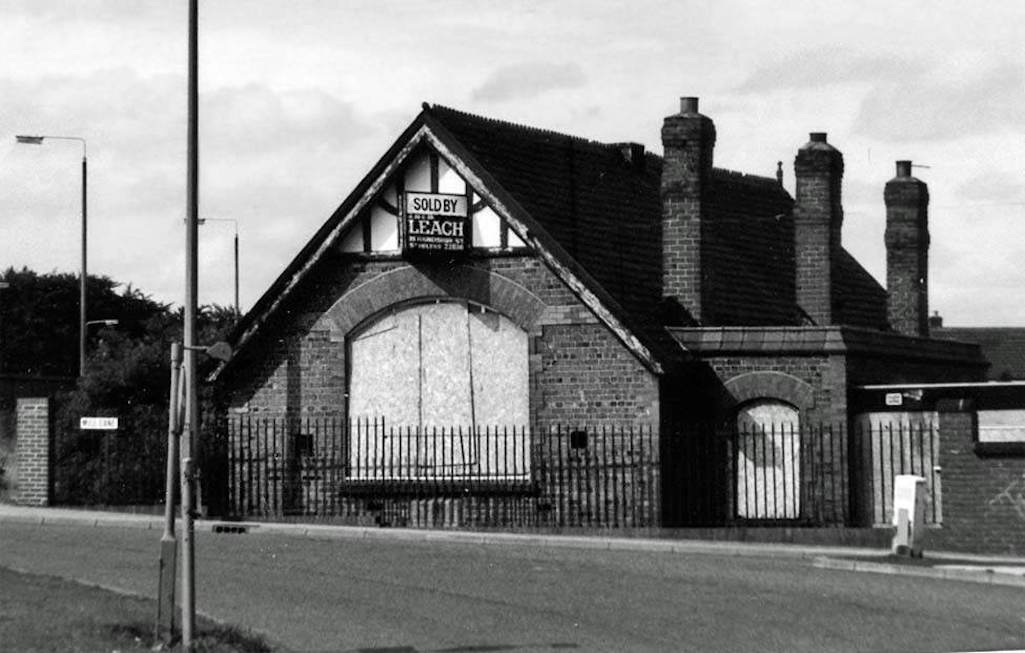
Marshalls Cross School at the top of Mill Lane after the school closed - contributed by Jim Lamb

Marshalls Cross School at the top of Mill Lane after closing

Photo taken after the school closed
Clock Face Colliery School / St. Aidan’s School
Clock Face School was situated in Lindsay Street, off Clock Face Road. The Wigan Coal & Iron Company first made plans to build a school near to their Clock Face Colliery in late 1912. At first there was some uncertainty as to whether the new school should be Church of England or non-denominational. But by the time that the legally-required public notices were published in the St. Helens newspapers on March 21st 1913 announcing their intention to build a new school, it had been decided that it should be C. of E. Issues with water and gas supplies, along with the outbreak of war, led to the project’s temporary abandonment.The scheme was revived in February 1916 as the rapid development of Clock Face led to increasing pressure on school provision in the district. Although houses were being built at a fast pace, some miners were refusing to work at Clock Face through a lack of a school.
A census conducted in 1916 revealed that of the 234 children of school age in Clock Face, 140 were studying at Bold Heath School, 50 at Sutton Manor, 19 at St. Annes RC, 6 at Sutton National, 4 at Rainhill RC, 3 at Higher Grade in St.Helens and 1 at Cowley. Eleven children in Clock Face were not attending any school at all. Bold Heath School was nearly two miles away and was described by one education official as being in ‘bad premises and overcrowded’ and the road to the recently-opened school at Sutton Manor 1½ miles away was described as being dangerous for youngsters to use.
The architects for the new school were William and Segar Owen of Warrington and their building was set to provide places for 250 children on a site covering 4218 square yards at a cost of £5261. The proposed Clock Face school had to be approved by the Board of Education (B. of E.) if it wanted to be placed on its annual grant list. Internal B. of E. memos obtained by this website demonstrate some concern that the cost per pupil was very high at £26 per person.
However one official argued that the building should be encouraged as the colliery company was making big profits and could well afford to build the school. It was suggested that if there was a slump after the war, they might decide not to go ahead and St.Helens ratepayers would have to pay for the construction instead. Initially the school hall would be partitioned allowing three classes to be taught with a Sunday school taking place in the hall on Sundays. The intention was for the school to be expanded in time to accommodate 600 pupils.
The school roofed with red tiles and originally known as Clock Face Colliery School was approved by the Board of Education and it opened in September 1917. There were five classrooms, with two rooms measuring 25 feet x 20 feet and the partitioned large hall was 59 x 29 feet. The Wigan Coal & Iron Company paid for its construction and for a token £1 a year leased the building to four foundation managers.
These were William Sword, manager of Clock Face Colliery, John Pickett, colliery undermanager, Rev. William Colegrove of Sutton Parish Church and Rev. Richard Mann. They were responsible for all overheads, including the cost of building maintenance, insurance, local authority rates etc. Although not strictly a church school, the lease insisted that religious instruction was to be given to all children and all master and mistresses had to be members of the Church of England.
A newspaper article in 1934 described how the school was supported entirely by volunteers and how the roof had become corroded. A well-remembered headmaster from the 1930s and ‘40s was Frank Kenwright, who some have said was a strict disciplinarian. In 1942 Rev. J. D. Jones, the Vicar of Sutton, acquired the school for the Church of England. During WW2 the school was used to distribute ration books to the people of the village.
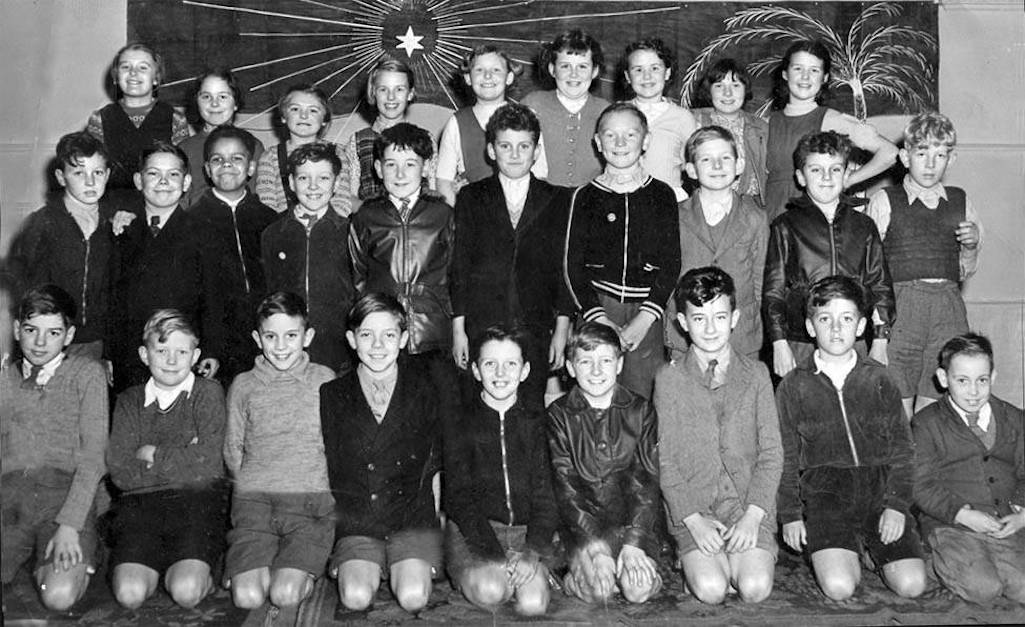
St. Aidan's class photograph c.1953/54 - contributed by Mike Rennie

St. Aidan's class photo c.1953/54 - contributed by Mike Rennie

St. Aidan's class photograph c.1953/54
The headmasters and third year teachers were Mr. Eric Leatherbarrow and Mr. R Byron. In the above class photograph c.1953/54 are on the back row L to R: Dorothy Hill, Joan Davies, Norma White, Sylvia Brown, Joyce Woodward, Dorothy Ashcroft, Ann Bramely, Margaret Bowden, Mavis Little. Middle row: Jimmy Prescott, Geoff Heyes, Roger Benson, Roy Little, Tony Lee, Michael Rennie, Stanley Pumford, Keith Littler, Allan Nutall, Eric Heward. On the Front Row is Leslie Painter, Allan Parr, Keith Worral, Barry Tilley, Ken Hill, John Kenny, Kenneth Dickson, Derek King and Dave Woodward.
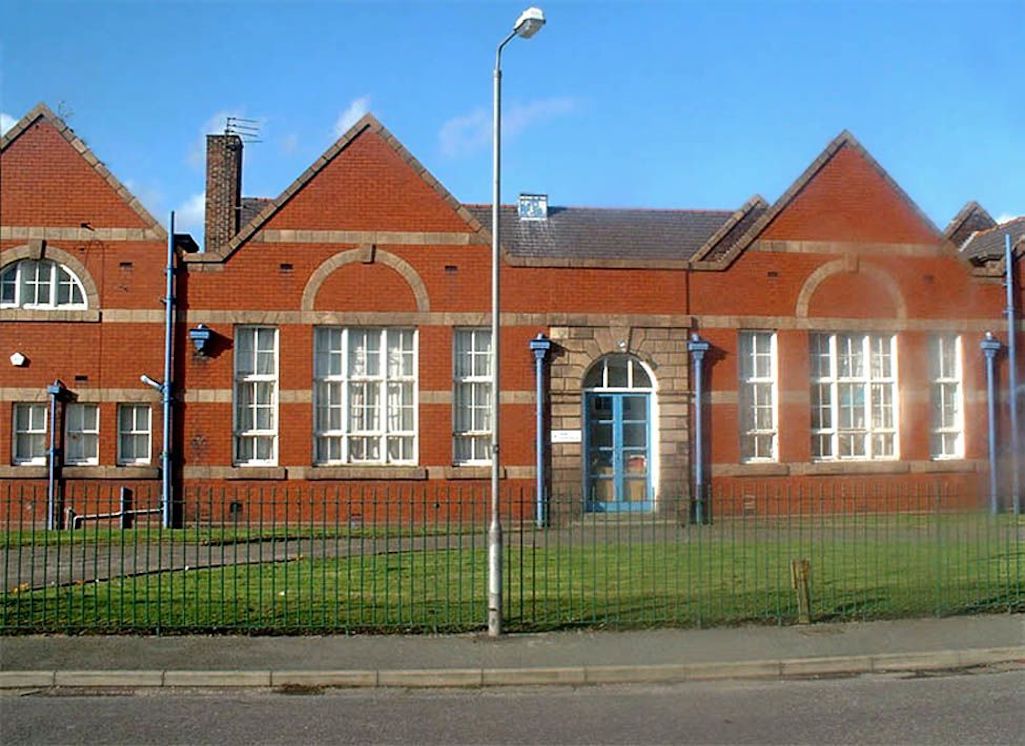
The front of St. Aidans school in Lindsay Street, Clock Face looking south - taken by John Oates

The front of St. Aidans school in Lindsay Street, Clock Face looking south

St. Aidan’s school in Lindsay Street
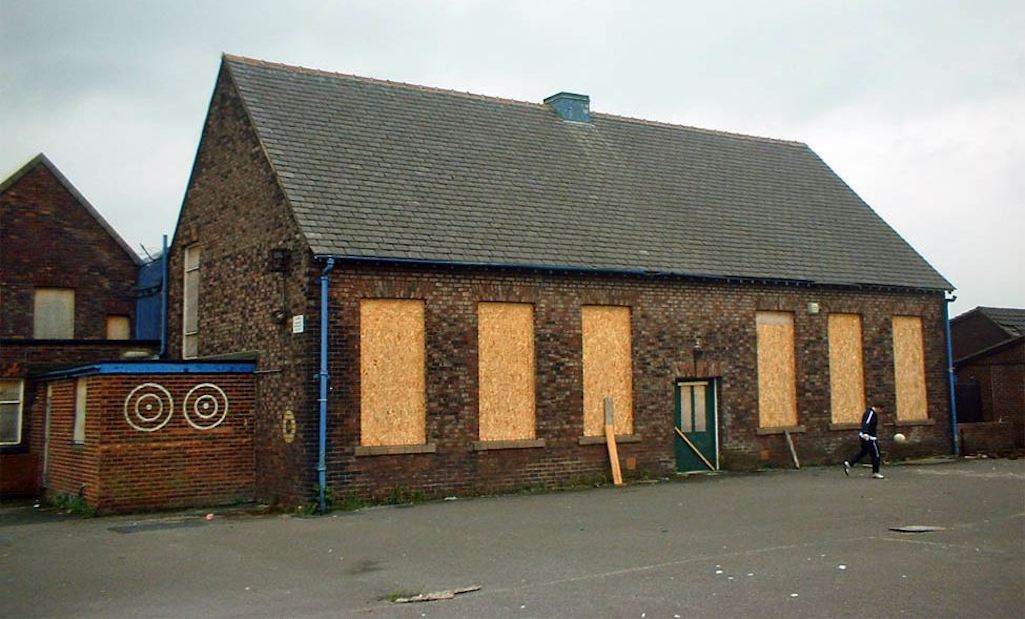
The main hall at St. Aidans, Clock Face immediately prior to demolition - contributed by Andy Mayer

The main hall at St. Aidan’s immediately prior to demolition

The main hall at St.Aidan’s school immediately prior to demolition
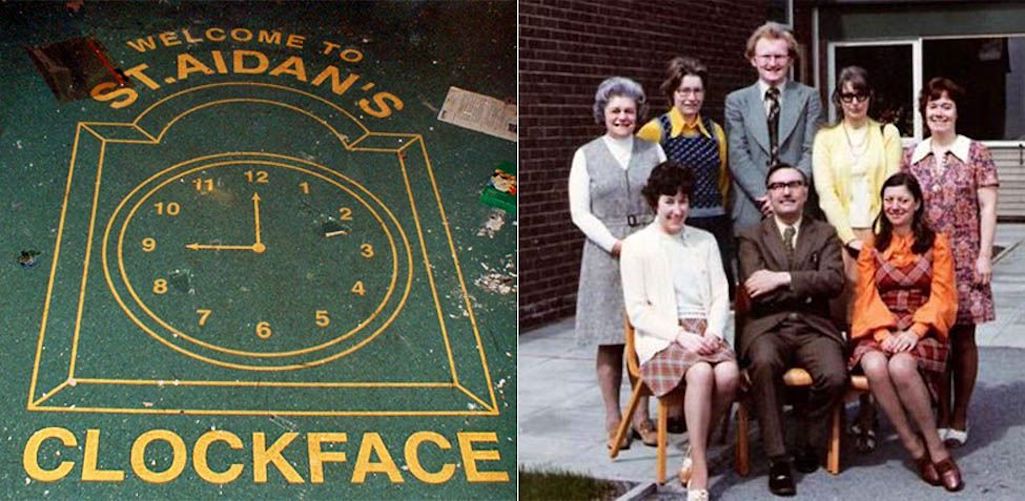
L-R standing Mrs Fryer, Mrs Davies, Mr Twist, Mrs Jones & Mrs Brookfield. L-R seated Mrs Cotton, Mr Bell (head) & Mrs Crumpler

Entrance and staff photo - L-R standing Mrs Fryer, Mrs Davies, Mr Twist, Mrs Jones & Mrs Brookfield. L-R seated Mrs Cotton, Mr Bell (head) & Mrs Crumpler

St.Aidan’s school entrance and a staff photograph taken in 1975
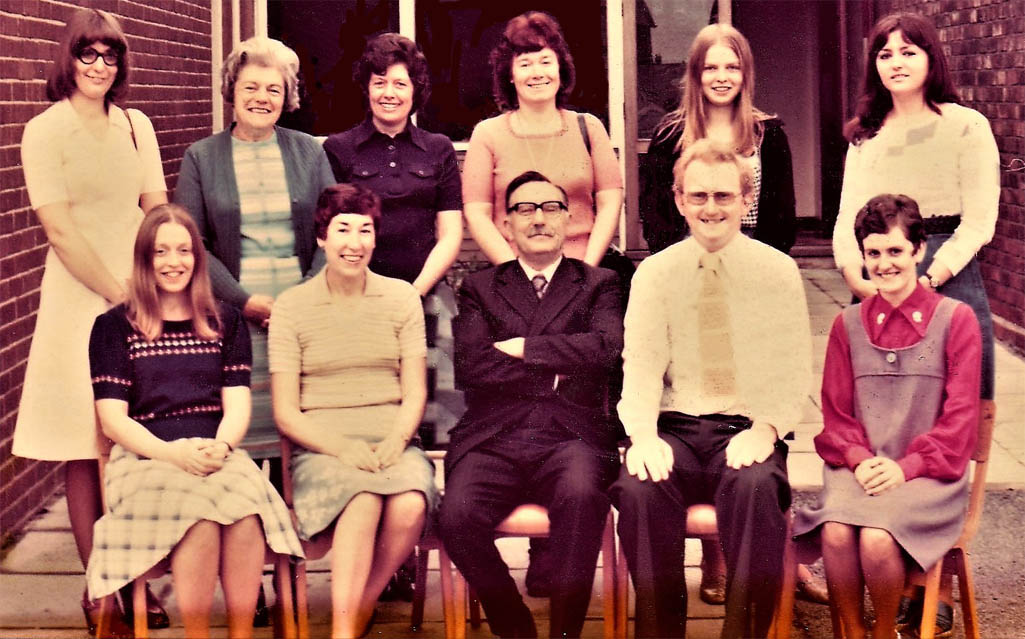
The school closed in 2002 because of a 19 per cent reduction in its roll during the previous three years, due to a declining birth-rate in the district. The buildings were subsequently demolished and Clock Face / St. Aidan's School is now the site of apartments known as St.Aidan's Court). If you are able to provide more information or photographs of Clock Face School or St. Aidan's School, please do get in touch. (Thanks to Andy Mayer, Mike Rennie, Ken Baines, Stephen Twist & Joan Brough for their contributions)
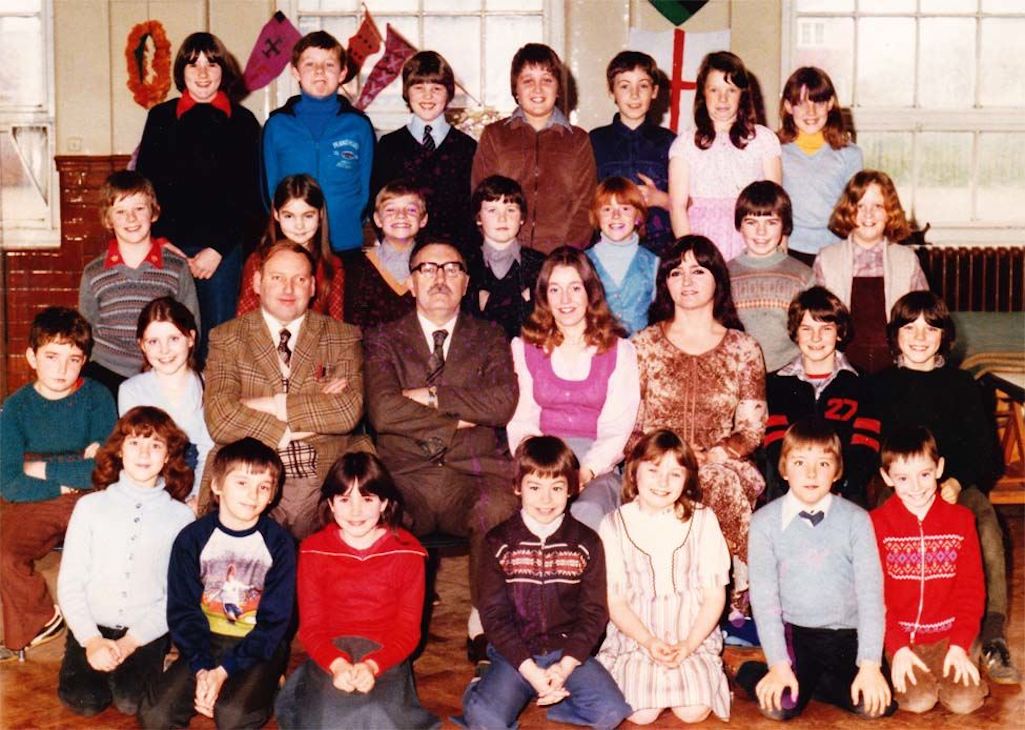
St. Aidan’s pupils about to embark on a trip to Littledean in Gloucestershire c.1980 - contributed by Andy Mayer

St.Aidan’s pupils about to embark on a trip to Gloucestershire c.1980

Class photo of pupils c.1980
Sutton Library and Sutton Manor Library
Sutton Library was opened in a former house and shop in Sutton Road on February 3rd 1887. The 'free' library was located near to Sutton's pumping station and water works and what became the Sutton Oak Welsh Chapel. The decision to open a branch library in Sutton had been taken on November 17th 1886 at a meeting of St.Helens Corporation's Library Committee. The books in the free library were available to all Suttoners to borrow. However, households who had Scarlet Fever were banned, due to fears of the contagious disease being transmitted through books.The library had been proposed at the committee meeting by Alderman Arthur Sinclair (1823-1900) who lived at Waterdale in Sutton, supported by fellow Suttoner Noah Greenough (c.1843-1899). Sinclair had formerly been the manager and treasurer of the St.Helens and Runcorn Gap Railway and in 1892 became the Mayor of St.Helens. During Sinclair's second term, the people of St.Helens subscribed £700 to pay for his portrait to be painted and it hangs to this day in the Town Hall. Cllr. Greenough ran a bakers and grocers at 66, Sutton Road.
The free library in Sutton was the first branch library in St.Helens and began in a very modest way. On October 19th 1887, it was reported at a committee meeting that the new library held a stock of 746 volumes, compared to the Town Hall library and reading rooms which had 13,682 books. Within two years, Sutton's stock had doubled to 1477 books and in June 1889, St.Helens Corporation approved the building of a new reading room. This cost £150 and was built on a plot of land adjacent to the library by builders Crake and Marsh of Liverpool Road, St.Helens. As well as books, the reading room held a stock of national and local newspapers plus magazines.
The library proved too successful and complaints were made of problems in obtaining certain titles. This was raised by Cllr. Greenough at a meeting of the library committee on September 24th 1890 and the Librarian's response was that popular books were often in other borrower's hands. During the month of January 1891, 1253 books were borrowed from the Sutton Road library with a total of 1593 visits recorded. The demand for borrowing books became so great that a second branch library was opened in Thatto Heath on November 3rd 1891. By this time the Sutton free library had expanded to 1,710 titles and during the previous year 13,623 books had been borrowed. Then on January 25th 1894, Sutton's Arthur Sinclair, as Mayor of St.Helens, opened the third free library in Chancery Lane, Parr which was built by contractor Peter Tickle for £850.
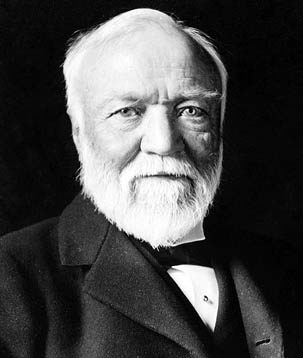
Although Sutton's library was popular, it had not been purpose-built and was not in a central location. In their edition of May 18th 1889, when plans were afoot to expand the library, the St.Helens Reporter had argued that a more fitting site could be found closer to Sutton National School. However it took St.Helens Council sixteen years to come to the same conclusion. On November 16th 1905, a new Sutton library was opened by the Mayor of St.Helens, Henry Martin, through a donation of £3000 by Andrew Carnegie.
The steel magnate and philanthropist funded three thousand libraries worldwide and his only conditions were that each local authority must provide the land for each library and an adequate budget for operating and maintaining them. The latter had been in place since Sutton's library first opened in a converted shop some eighteen years earlier, so St.Helens Corporation's tasks were to find and fund a site. A suitable plot near to All Saints Church was located and St.Helens' own philanthropist, Sir David Gamble, who had presented the Gamble Institute to the town in 1894, donated £213 to buy it.
Pilkington's constructed some houses by the library c.1906 and the new street was named Carnegie Street, later changing its suffix to Crescent. In 1987 Sutton Historic Society was formed by Eric Coffey at the suggestion of librarian Jennie Edwards. This was to mark the centenary of the Sutton library and the society's meetings were held there. When the New Street Community Centre opened during the Autumn of 1979, it incorporated a library that held up to 15,000 books. However that and the Carnegie Crescent library have both since closed.
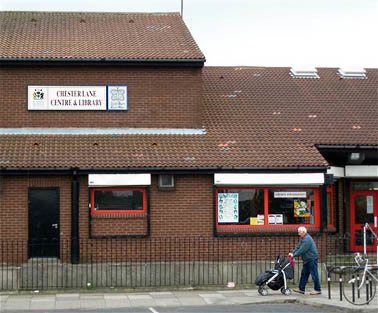
A new library was opened on October 4th 1949 in a building measuring 54 feet by 18 feet on part of the site of the Green Dragon Inn. During the war it had served as a barrack room for RAF personnel that were stationed in Sherdley Park. The library held a stock of 4,000 titles and 40,000 volumes were issued each year with 200 new borrowers per annum. The St.Helens Newspaper of October 7th 1949 reported that ten-years-old Nellie King of 74 Jubits Lane was the first customer of the library, who said she was looking to borrow an Enid Blyton title.
On May 30th 1968 the St.Helens Libraries, Museum and Arts Committee held their annual inspection of the town’s libraries. Their chairman Eric Kerr said his committee would be looking to create a new library in Sutton Manor to replace the existing one which was only operating part-time: “It is a growing branch …the existing building will be totally inadequate when the new housing development nearby is completed.”

